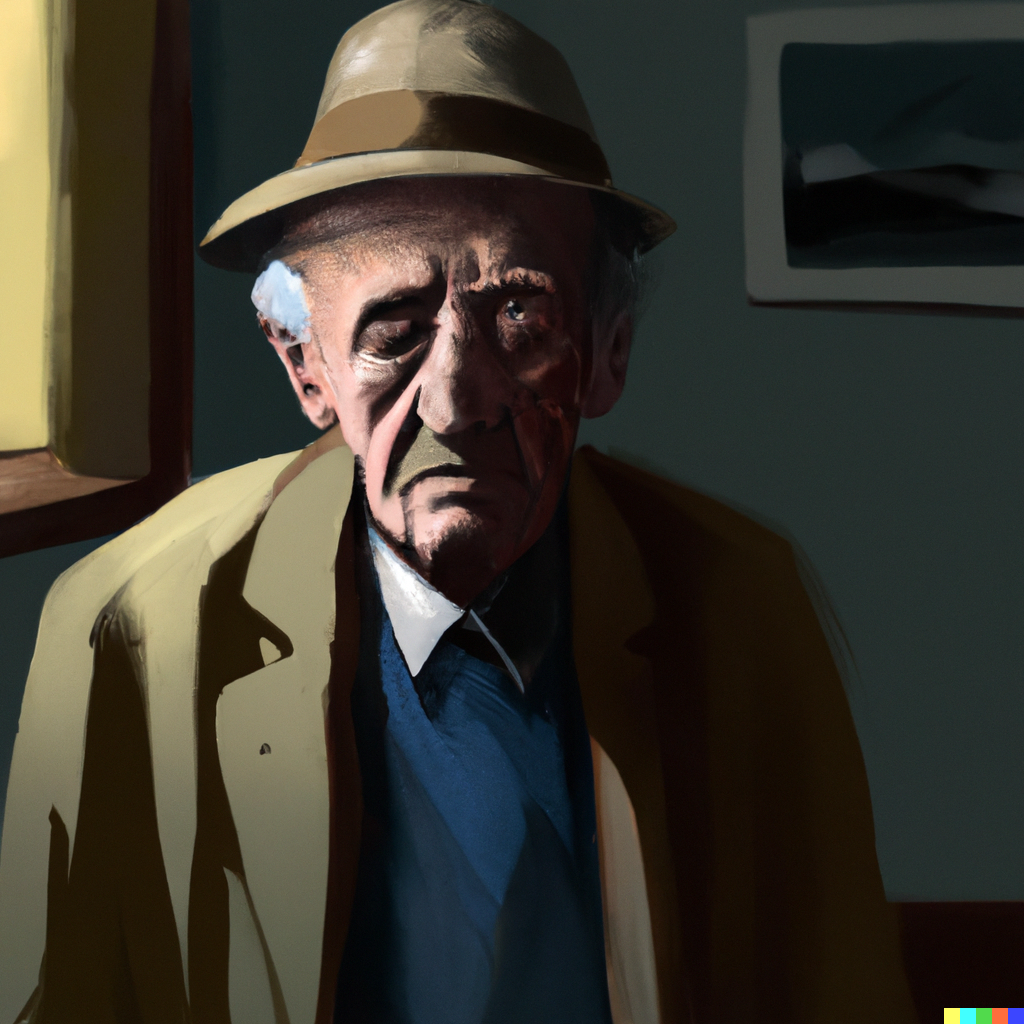On the morning of his 80th birthday, Franklin Whitmore awoke with a sense of clarity and purpose that felt as if it had been beamed directly into his brain by an extraterrestrial race. He decided that this was the day he would begin writing his autobiography.
As a man of peculiar habits and an affinity for ink stains, Franklin had been writing a diary since he was a teenager. Over the years, he had amassed an impressive collection of 156 leather-bound volumes, each one filled with the minutiae of his life. It was the kind of collection that would make a museum curator drool. He had always believed that the stories contained within those pages would serve as a testament to his existence, a legacy that would be handed down for generations to come, or at least until someone invented time travel.
With an air of anticipation that could rival a child on Christmas morning, Franklin carried the diaries into his study, carefully arranging them in chronological order on the mahogany shelves that lined the walls. He then proceeded to do a victory dance, channeling his inner Fred Astaire. As he surveyed the vast expanse of his life’s work, he felt a swell of pride so intense it could have inflated a hot air balloon.
Franklin settled into his favorite armchair, a glass of his preferred whiskey by his side (which, he had decided, was the secret to his longevity), and began the arduous task of reading through the diaries. At first, he found himself transported back to the days of his youth. He remembered the thrill of his first kiss, which was remarkably similar to the feeling of licking a 9-volt battery, the excitement of leaving home for college, and the nervous anticipation of starting his first job. The pages seemed to breathe life into these long-forgotten moments, and for a brief instant, Franklin was filled with a sense of wonder that could only be compared to discovering the meaning of life in a fortune cookie.
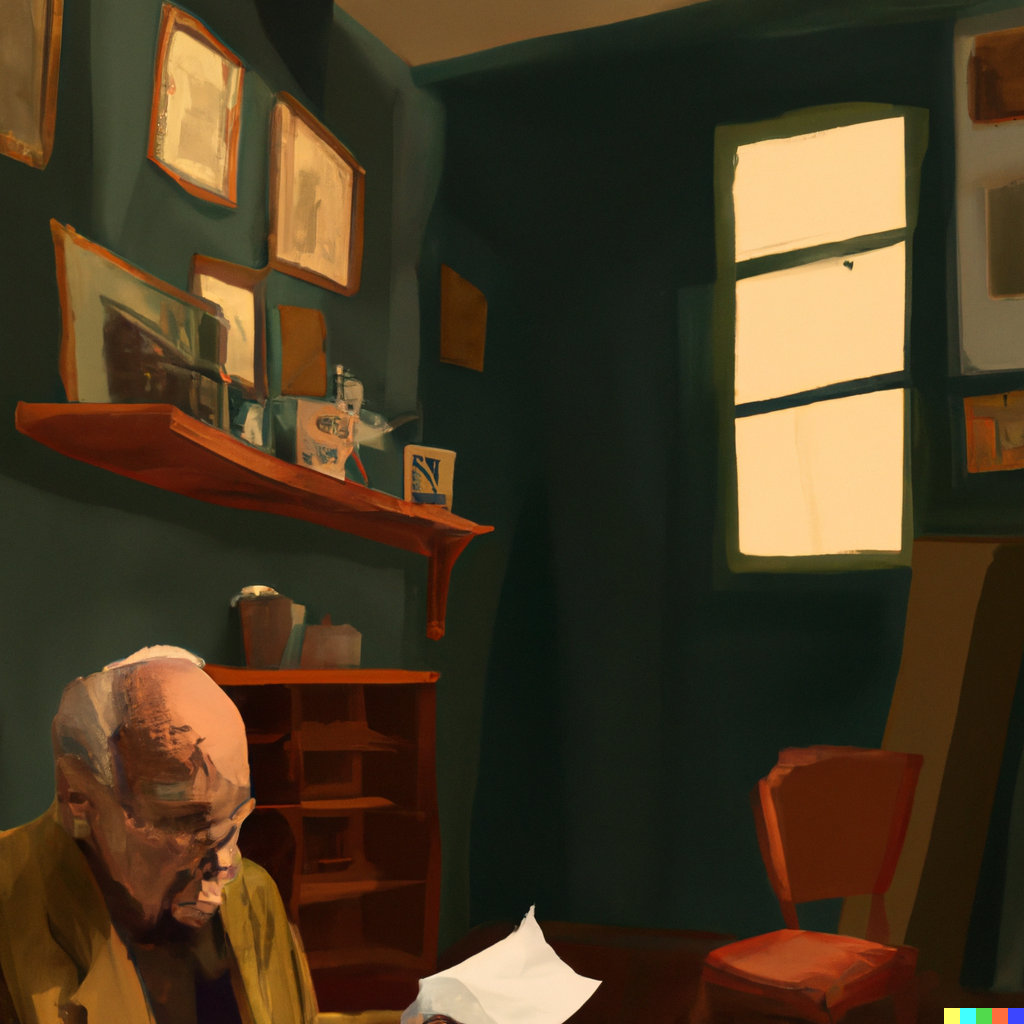
But as he continued to read, like an explorer venturing deeper into an ancient tomb, he found that the magic began to fade, as if the batteries in his metaphorical flashlight were dying. The entries became increasingly mundane, filled with the ordinary routines of life that had seemed as important as the secret to immortality at the time. He read about endless meetings at work that made watching paint dry seem exhilarating, the weather on days so unremarkable they could have been extras in a B-list movie, and the trivial arguments he had had with his wife over the optimal sock drawer organization.
The words on the pages seemed flat and lifeless, as if they had been written by a sentient pancake. They were devoid of the passion and vitality he had expected to find, like searching for a needle in a haystack and only finding hay.
Disappointment gnawed at Franklin’s heart like a squirrel with a vendetta. He had believed that his life was filled with grand adventures and profound insights, but now he saw that it was merely a series of unremarkable moments strung together like beads on a string, each bead as dull as the next. He began to doubt the worthiness of his project, fearing that his autobiography would be as dull and uninspiring as a lecture on the history of beige.
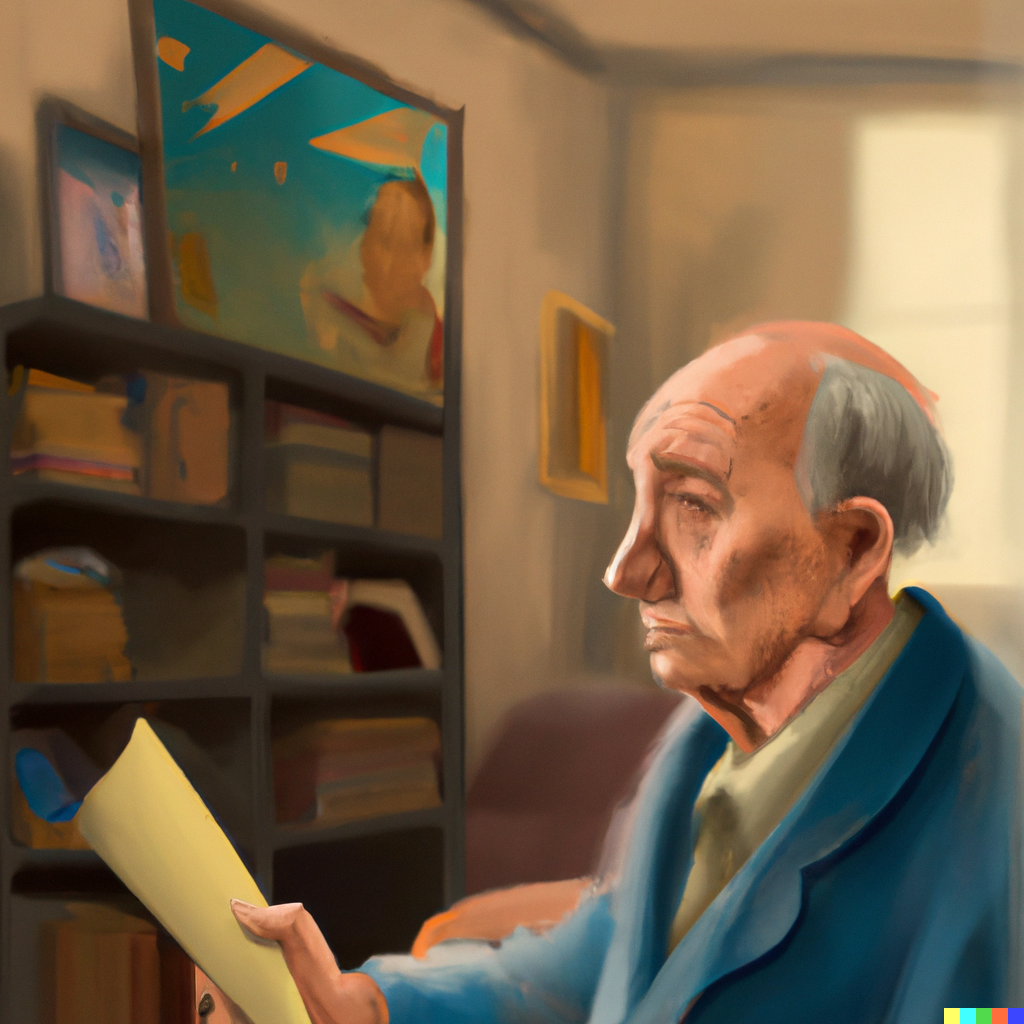
Yet Franklin persevered, driven by the belief that there must be some hidden gem within the pages, perhaps buried like a treasure in a pirate’s chest. He continued to read and write, doggedly trying to weave a compelling narrative from the threads of his ordinary existence. But as the days turned to weeks, and then to months, the hope that had once burned brightly within him began to flicker and die, like a campfire in a rainstorm.
On the eve of his 81st birthday, Franklin Whitmore made a decision as monumental as the discovery of fire. He would not complete his autobiography. He realized that the true value of his diaries lay not in their ability to entertain or inspire, but in their capacity to serve as a record of his life, however mundane it may have been, like an encyclopedia of the ordinary. He accepted that his story might not captivate the hearts and minds of his descendants, but perhaps it would provide them with a glimpse into the past and an understanding of the man who had come before them, like a window into a world where dial-up internet still reigned supreme.
With a sense of resignation that could rival a sloth’s enthusiasm for exercise, Franklin carefully placed his diaries back on the shelves, leaving them for the next generation to discover like a time capsule filled with vintage memes. He continued to document his experiences in his diary, but with the understanding that the words he wrote were not meant to impress or captivate like a magician at a children’s party; they were merely a testament to his existence, a way of bearing witness to the life he had lived.
When Franklin passed away at the age of 88, he left behind a collection of diaries that spanned nearly seven decades like a literary bridge through time. His children and grandchildren, curious about the man they had known and loved, initially delved into the pages of his life. They found within those volumes a portrait of a man who had lived an ordinary life, but who had done so with grace, humility, and quiet determination like a ninja turtle trained in the art of inconspicuousness.
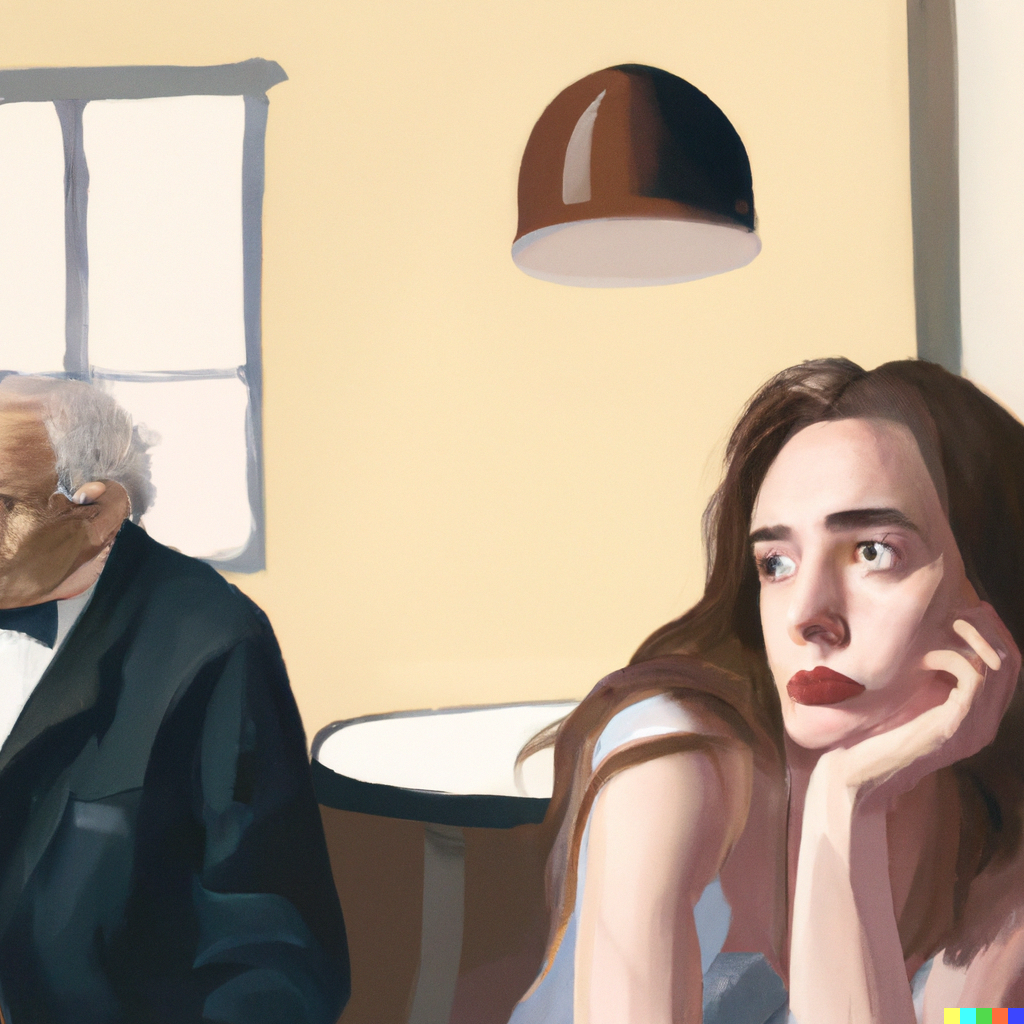
Over the years, Franklin’s diaries were forgotten like the lyrics to a once-popular pop song. Occasionally someone would read a few pages, but they remained mostly untouched. The real breakthrough came almost a century later when his great-granddaughter discovered Franklin’s diaries like a treasure hunter unearthing a long-lost artifact. Once she started reading them, she couldn’t stop. She learned of the quiet moments that had defined Franklin’s life: the way he had lovingly tended to his garden as if the plants were his children, the pride he had felt in his children’s and grandchildren’s accomplishments like a baker admiring a perfectly risen soufflé, and the deep bond he had shared with his wife like two puzzle pieces that fit together perfectly.
Eventually, she became so obsessed with the diaries that they became the sole purpose of her life – to write her great-grandfather’s biography. She went through the mundane process of digitizing each and every page of the diary like a robot with a scanning addiction, and then asked an AI writer to compose a biography enriched with historical context. The result became an international bestseller.
People from all corners of the world were captivated by Franklin’s story like moths to a flame. His life, which he had once thought to be dull and unremarkable like a well-worn pair of socks, now resonated with millions of readers who found solace in his experiences. They connected with his struggles, his quiet victories like a triumphant game of solitaire, and the love he had for his family.
Critics focused on the part where he attempted to write it himself and simply found his life boring, and that after 100 years, people found it fascinating like the sudden resurgence of a long-forgotten fashion trend. They concluded that one should never attempt to write their own autobiography, as the best biographies are written by others who can objectively examine a life and tease out the most significant moments like a skilled archaeologist. Furthermore, time lends a crucial perspective, allowing subsequent generations to appreciate the true impact and value of the life in question like a fine wine that only gets better with age.
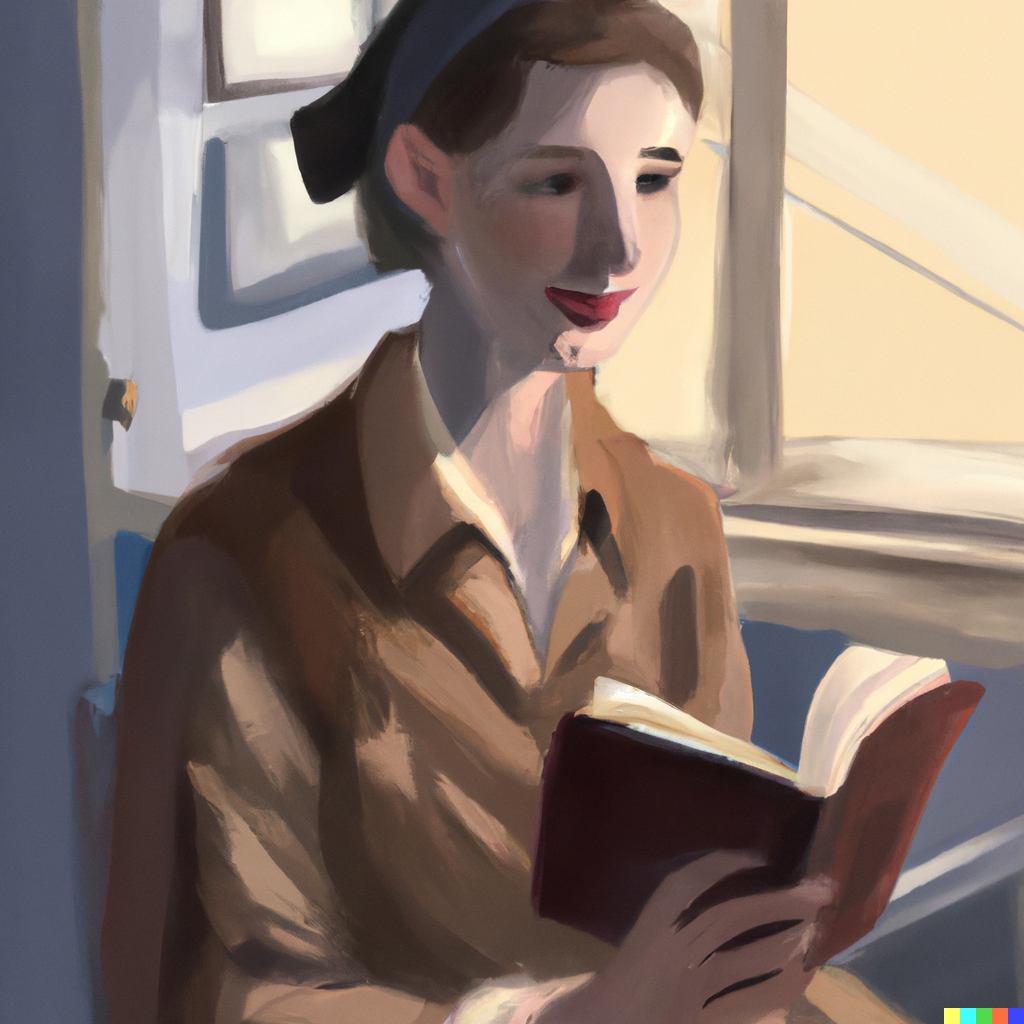
Franklin’s biography, titled “The Chronicles of a Life Not Lived,” became a cultural phenomenon. Book clubs dissected the text like a literary autopsy, universities taught courses based on it, and it was even adapted into a critically acclaimed film. Franklin’s life, once dismissed as uninteresting like an overcooked piece of toast, became a testament to the beauty of the ordinary.
In the end, Franklin’s great-granddaughter realized that what made her ancestor’s life extraordinary was not the grand adventures or profound insights he had sought in his diaries, but the simple, everyday moments that he had shared with those he loved like a collection of perfectly captured candid photographs. His story reminded readers that life’s true value lies not in the exceptional moments like a fireworks display, but in the connections we make and the love we share like the comforting warmth of a well-worn quilt. And in this way, Franklin Whitmore’s legacy lived on – not as a record of a life not lived, but as a celebration of a life well-lived in all its beautiful simplicity, like a perfectly executed haiku.
And so, the curious masses embarked on a journey to excavate the digital fossils of their ancestors’ lives, much like an intergalactic archaeological expedition. They dove into the depths of cyberspace, unearthing digital artifacts from the forgotten recesses of the internet.
The once-ubiquitous Facebook, a social media platform of yesteryear, became a treasure trove of insight, offering up digital breadcrumbs that guided these intrepid explorers through the digital maze of their family histories. From the minutiae of daily life to the shared expressions of joy and sorrow, these digital relics painted a vivid picture of the lives that had once unfolded before the eyes of their digital contemporaries.
As stories were pieced together, a sense of camaraderie bloomed among the digital ancestry movement. Families formed bonds with one another over their newfound knowledge, and those who had once been strangers became linked by the threads of a common past. The discoveries made by these digital archaeologists became a cultural touchstone, fueling lively conversations around virtual watercoolers and leading to the creation of digital ancestry clubs.
The phenomenon, sparked by the AI-written biography of Franklin Whitmore, left an indelible mark on the world. His humble, paper-bound diaries had given rise to a movement that bridged the gap between generations and brought people closer to their roots, even as they navigated the vast expanse of the digital universe.
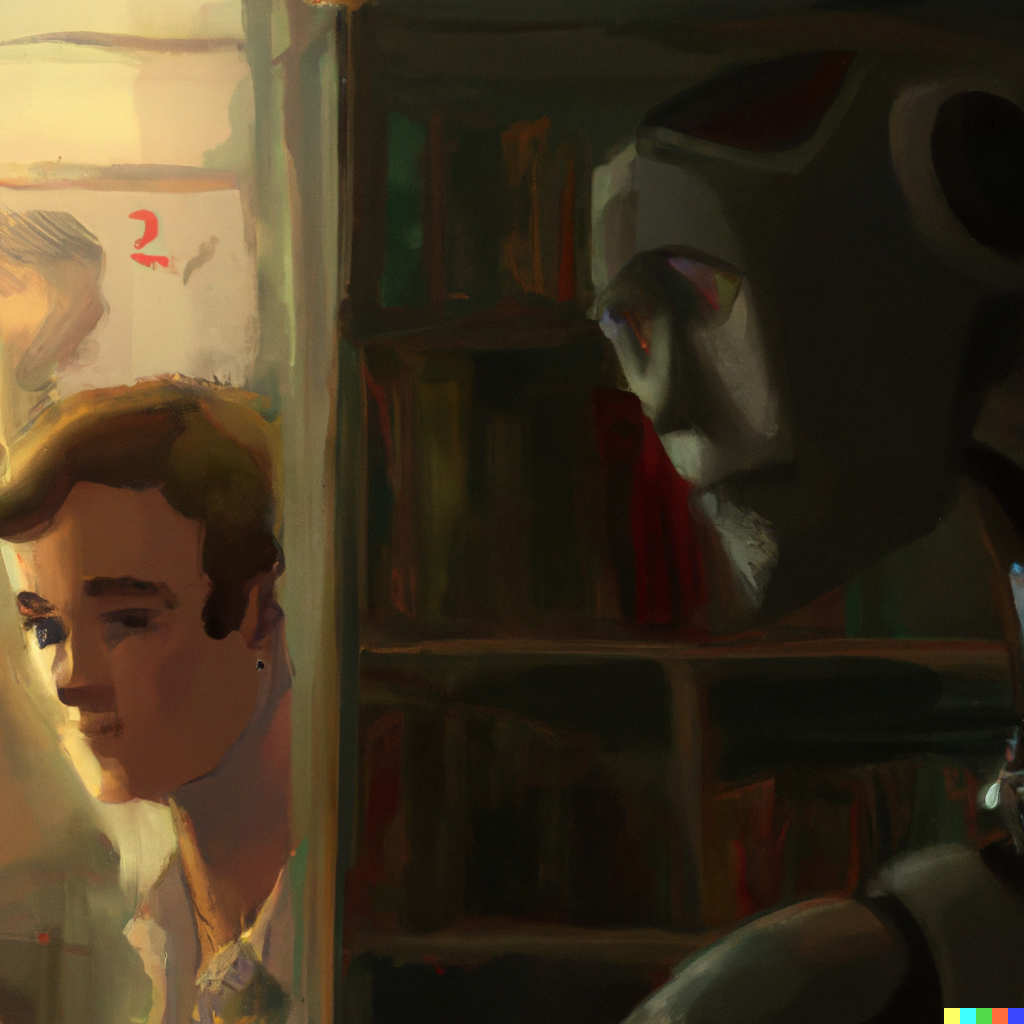
“The Chronicles of a Life Not Lived” served as a powerful testament to the fact that within the mundane, the ordinary, and the seemingly unremarkable, there is a story waiting to be told – a story that is uniquely ours, and that is woven into the cosmic tapestry of human existence. And with the help of technology, even the most unassuming lives could echo through the ages, inspiring and connecting people across the vast chasms of time and space.
All images were generated using DALL.E 2 (Open AI)
